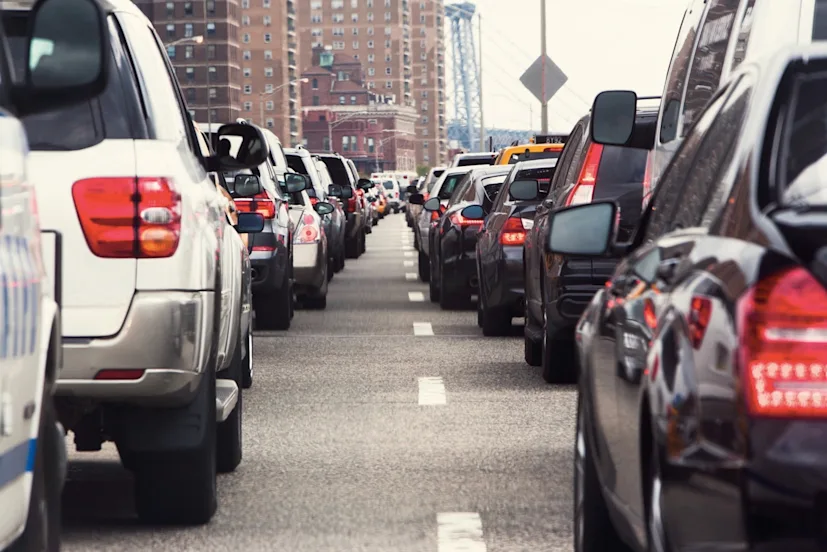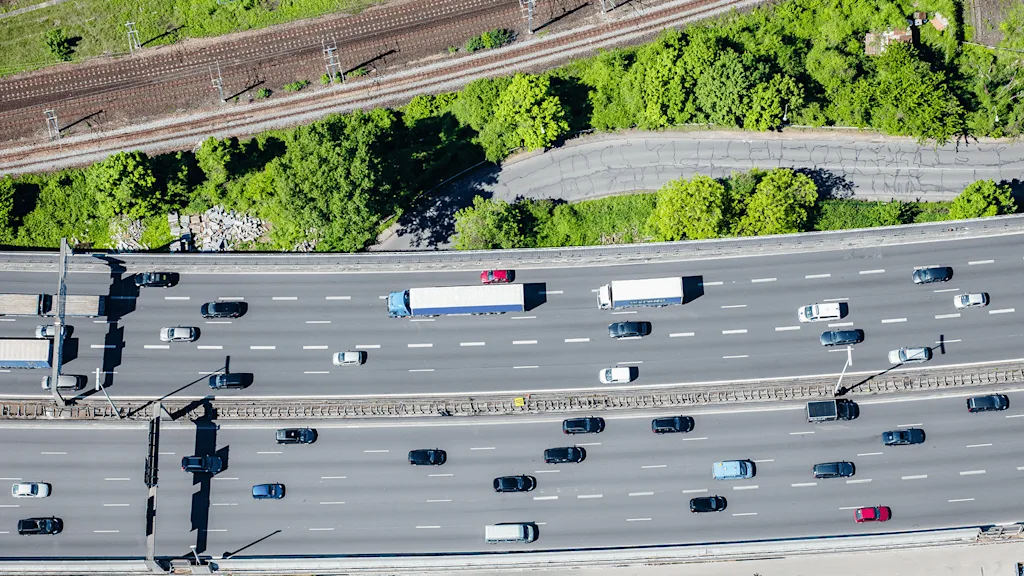4 min read
12 February 2020
Stuck in traffic? The science behind road congestion

Studies have proven that one person driving selfishly makes traffic worse for everybody. Luckily, driverless cars are also selfless.
In game theory, a Nash equilibrium is a state wherein every participant - using the best strategy available to them, while simultaneously aware of every other participant's best available strategy – can no longer gain an advantage by switching up their game plan.
In other, less abstract words, when you're on a congested highway and you decide to switch to a faster-moving lane followed by everyone behind you, the resulting pile-up negates the possibility of reducing your own personal traffic problem. A standstill-causing stalemate, if you will.
Gaming traffic theory
Unfortunately, as long as human drivers exist, any traffic situation of sufficient density will eventually reach Nash equilibrium. Even for a well-meaning driver, traffic can too often be summed up with the phrase, “damned if you do, damned if you don't".
The reason that even altruistic efforts fail is because no driver has access to perfect and complete visibility. And even if everyone was aware of their optimal route doesn't guarantee they would follow-through.
Thinking about the possibility of making things worse is also a reality that people don't often consider. An individual driver that chooses to hastily merge lanes may shave a second or two off their own commute, but the car behind them that has to suddenly brake could cause a bottleneck of stopping and starting that stretches back for miles.
Exacerbating things further are technologies that give drivers more information about the road, unintentionally encouraging even more selfish behavior. When some mapping applications give you directions using the quickest, least-trafficked route, they prompt every driver using that app to take that same course, causing it to fill up.

Solving selfishness
The Occam's razor solution for selfish drivers? Eliminate them entirely. And the technology needed to do so grows nearer every day. Besides being safer than human drivers, connected autonomous vehicles would also be more considerate. More than driving at optimal distances and speeds to reduce the escalating effects of stop-and-go, connected cars would be able to communicate with each other to perfectly coordinate decisions like lane changes and offer bespoke re-routing to enable everyone to reach their destinations in the fastest possible time.
To pave the way towards an age of more socially responsible driving, we have a suite of Advanced Driving Assistance Solutions that heighten drivers' awareness of the roads and traffic around them, giving them greater information from which to make smarter, mindful decisions.
But we don't have to wait for the driver-assisted or autonomous revolutions to reduce the ability of drivers to act selfishly. A solution for people living in denser urban areas and experiencing dense urban traffic already exists - public transit! A single bus or train can replace dozens of vehicles with a single driver who is occupationally or digitally-bound to specific routes. When it comes to the game theory of traffic, the best strategy is not to play.

Bradley Walker
Share article

Bradley Walker
Sign up for our newsletter
Why sign up:
Latest offers and discounts
Tailored content delivered weekly
Exclusive events
One click to unsubscribe
